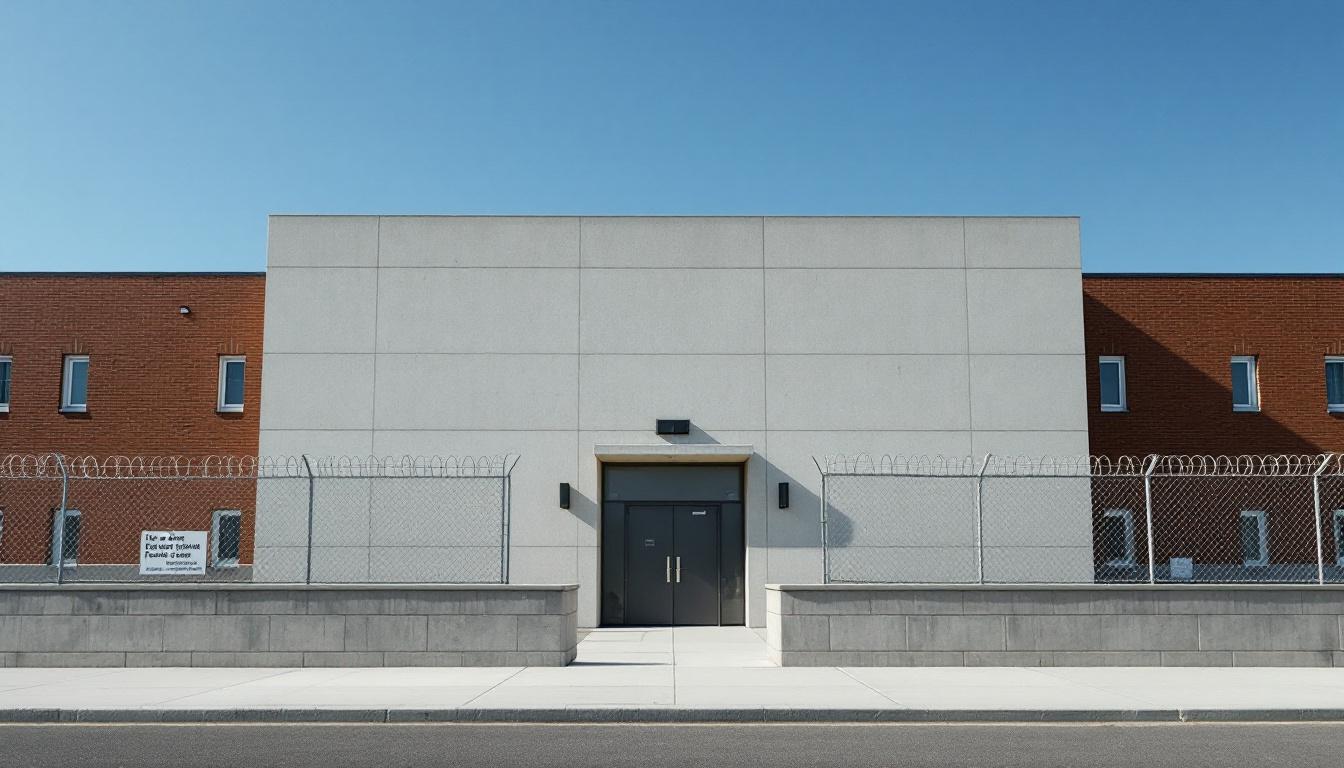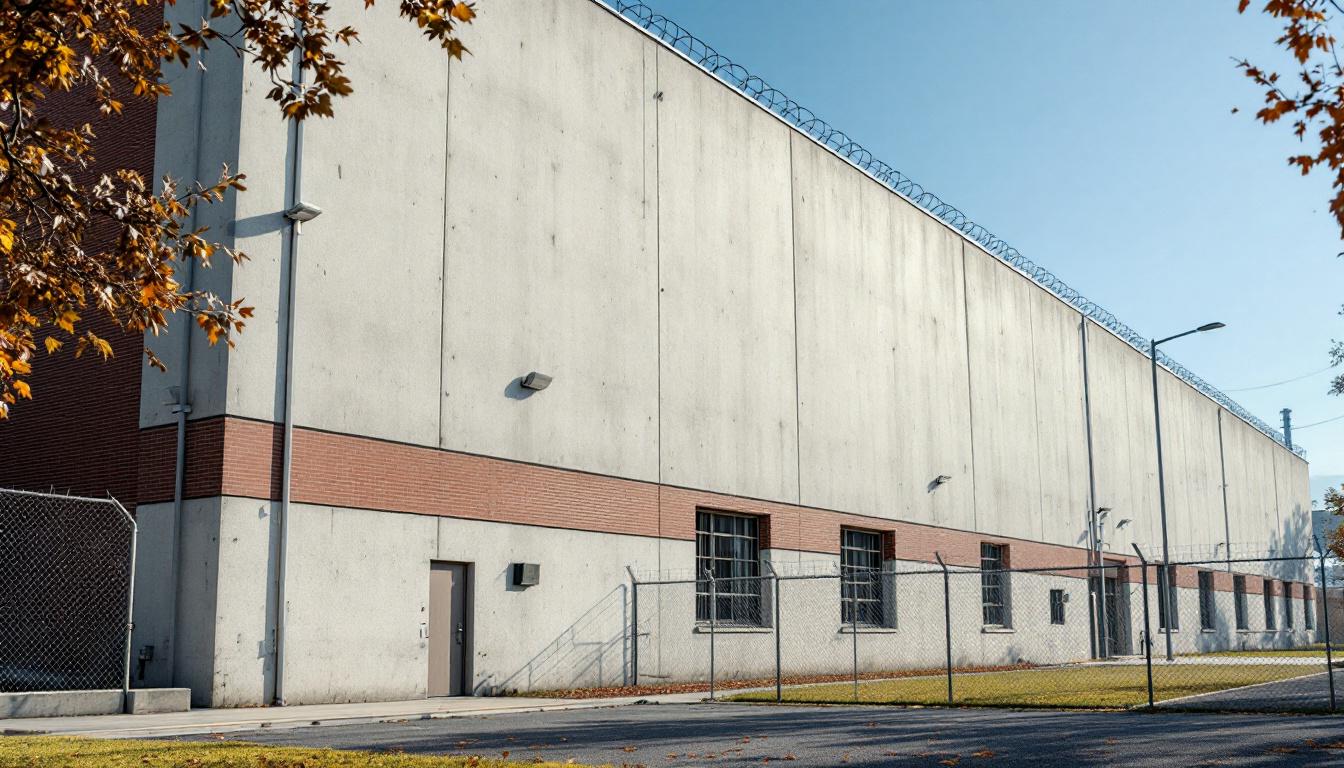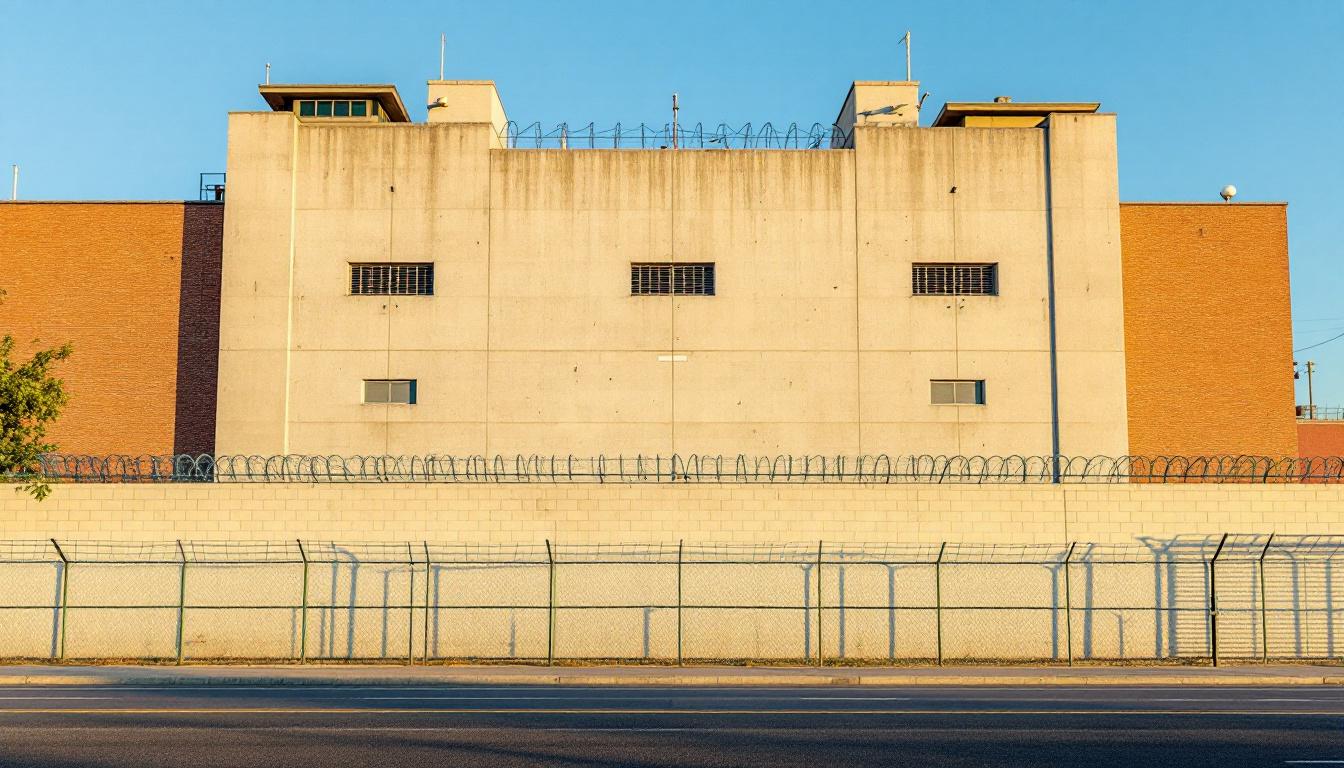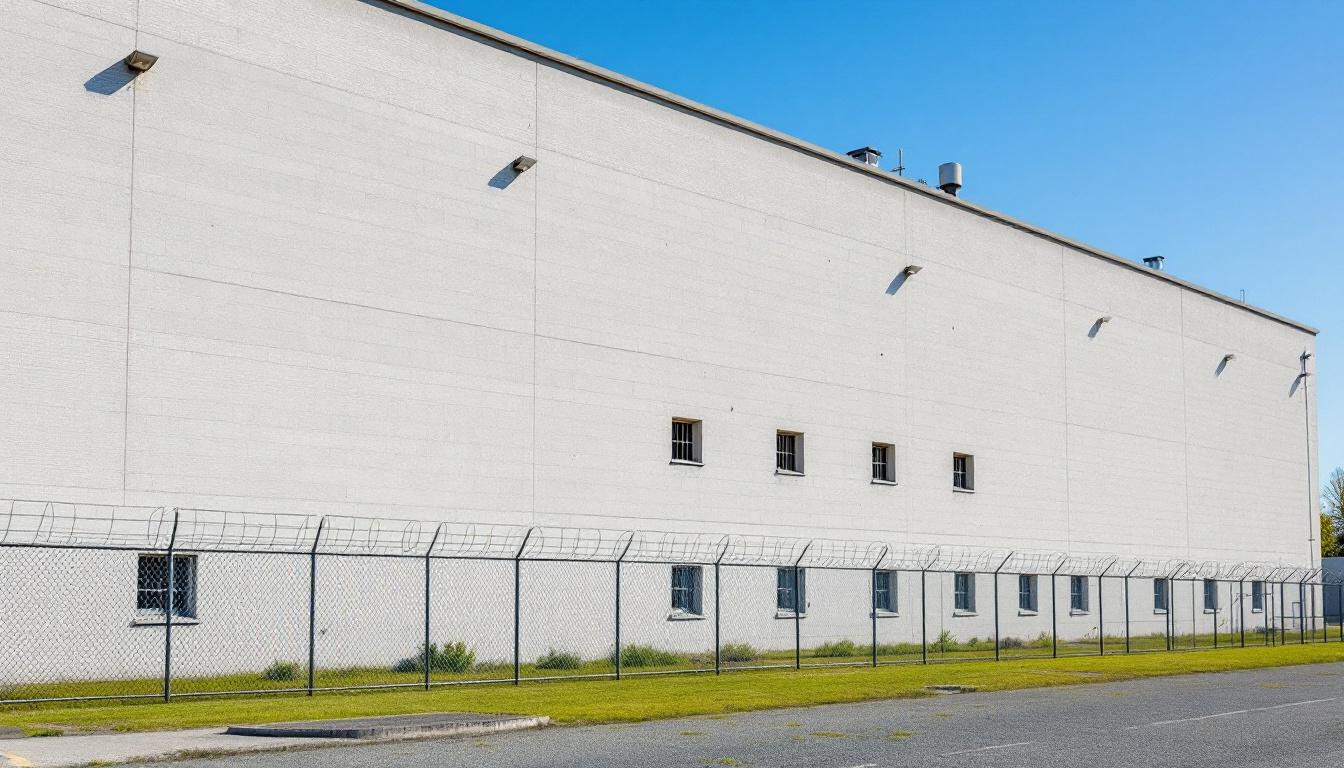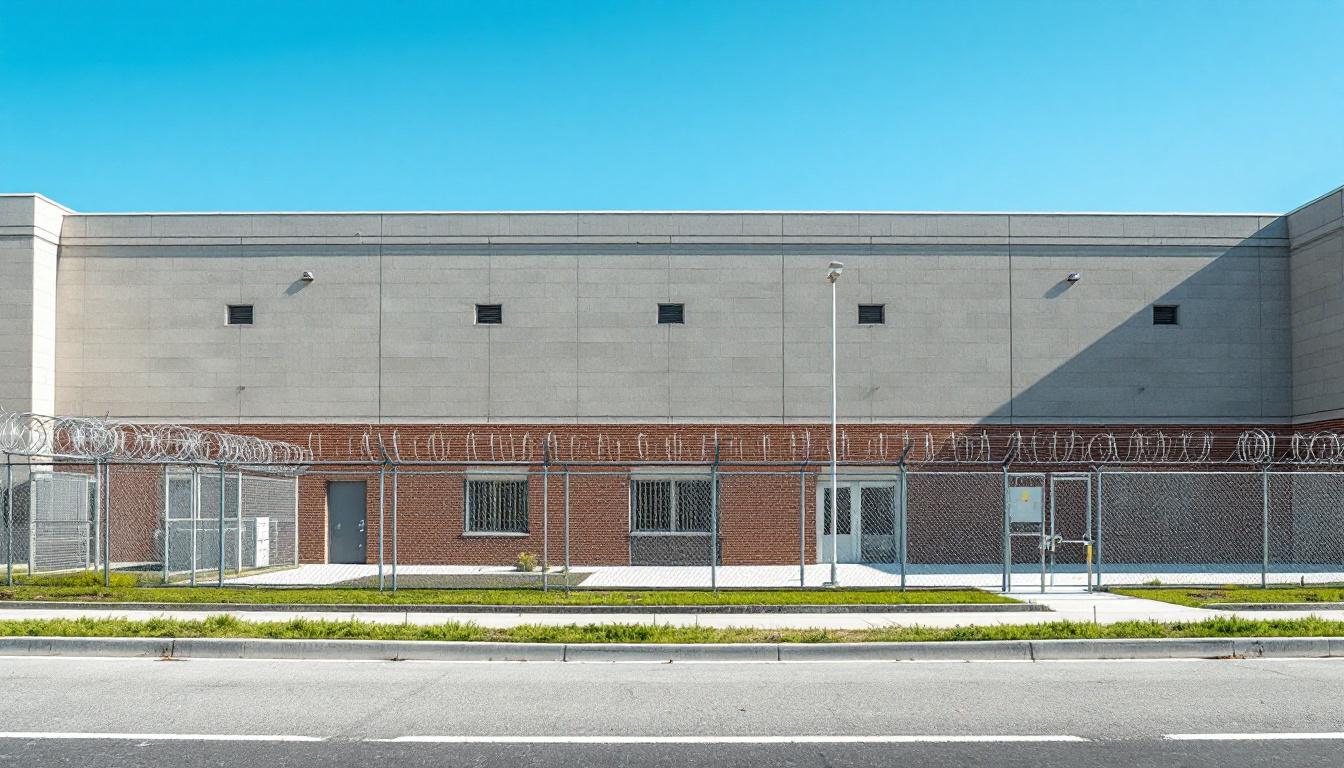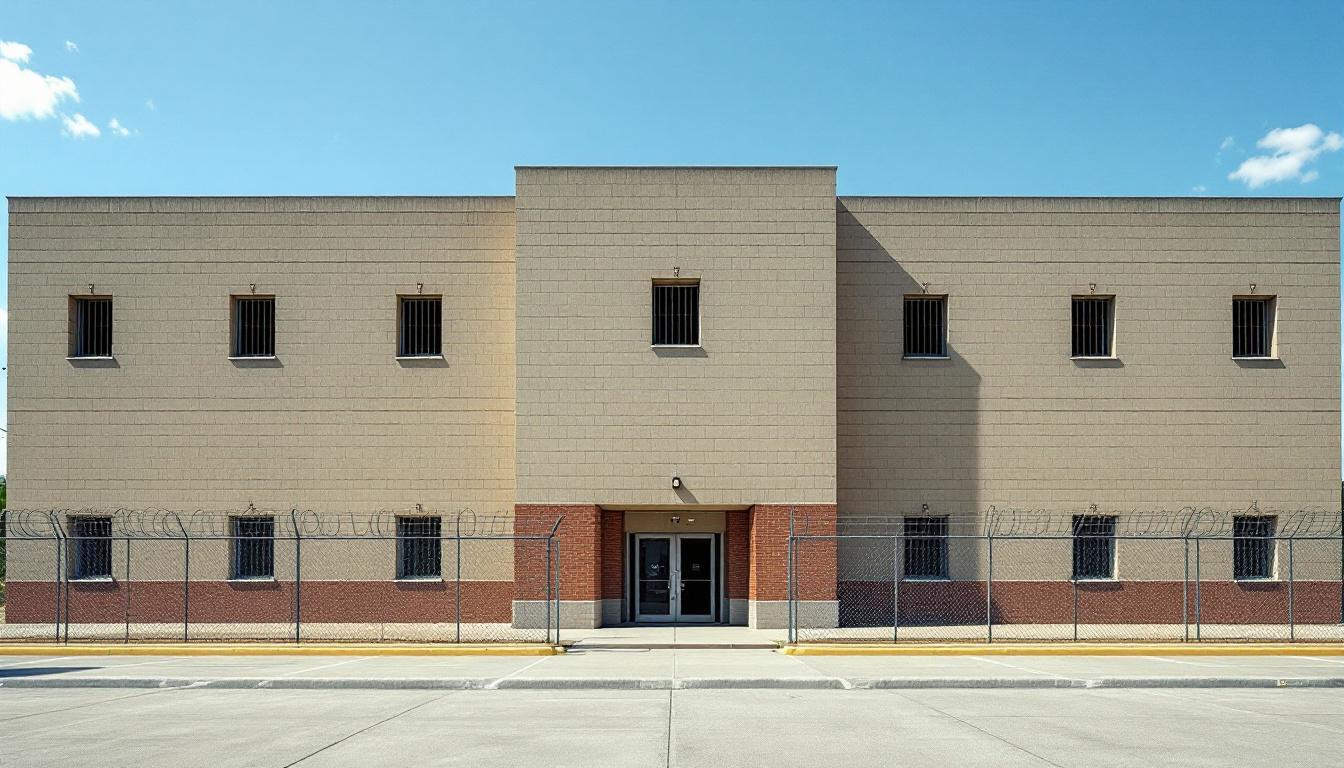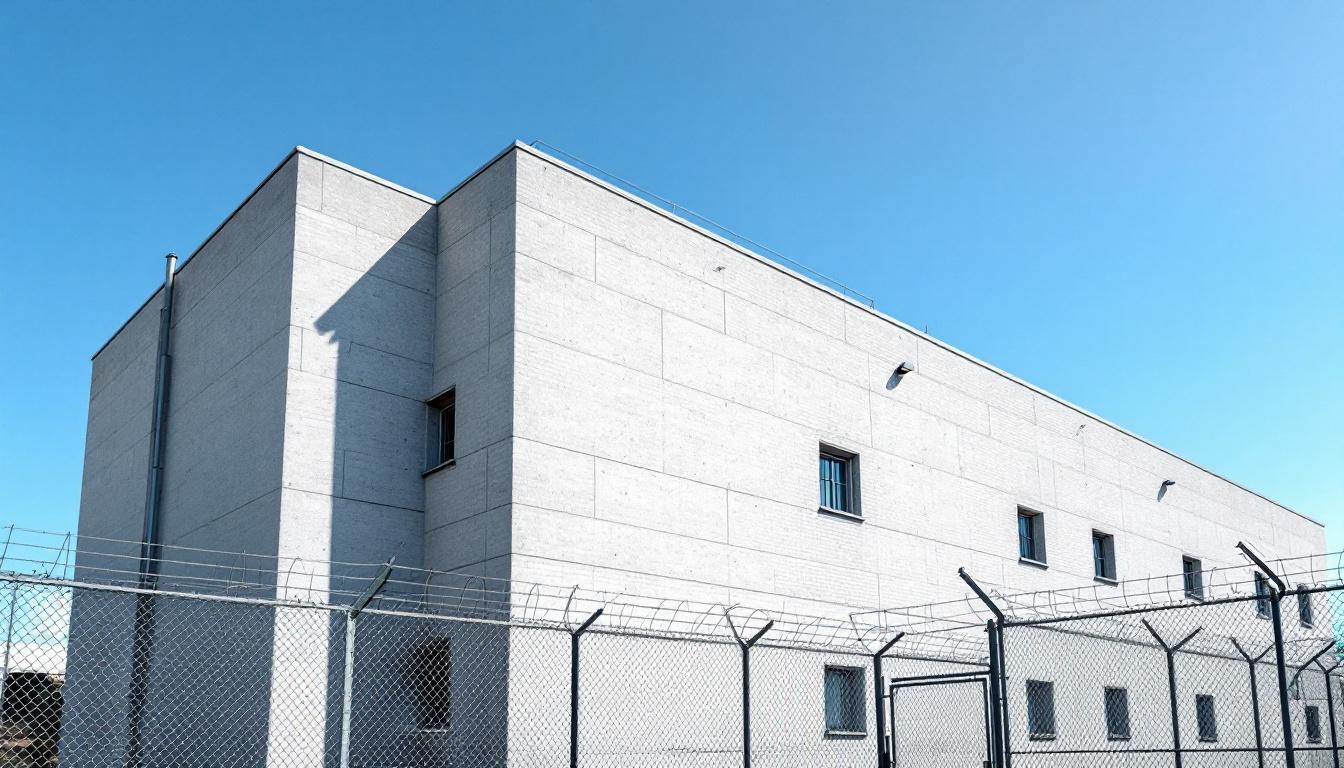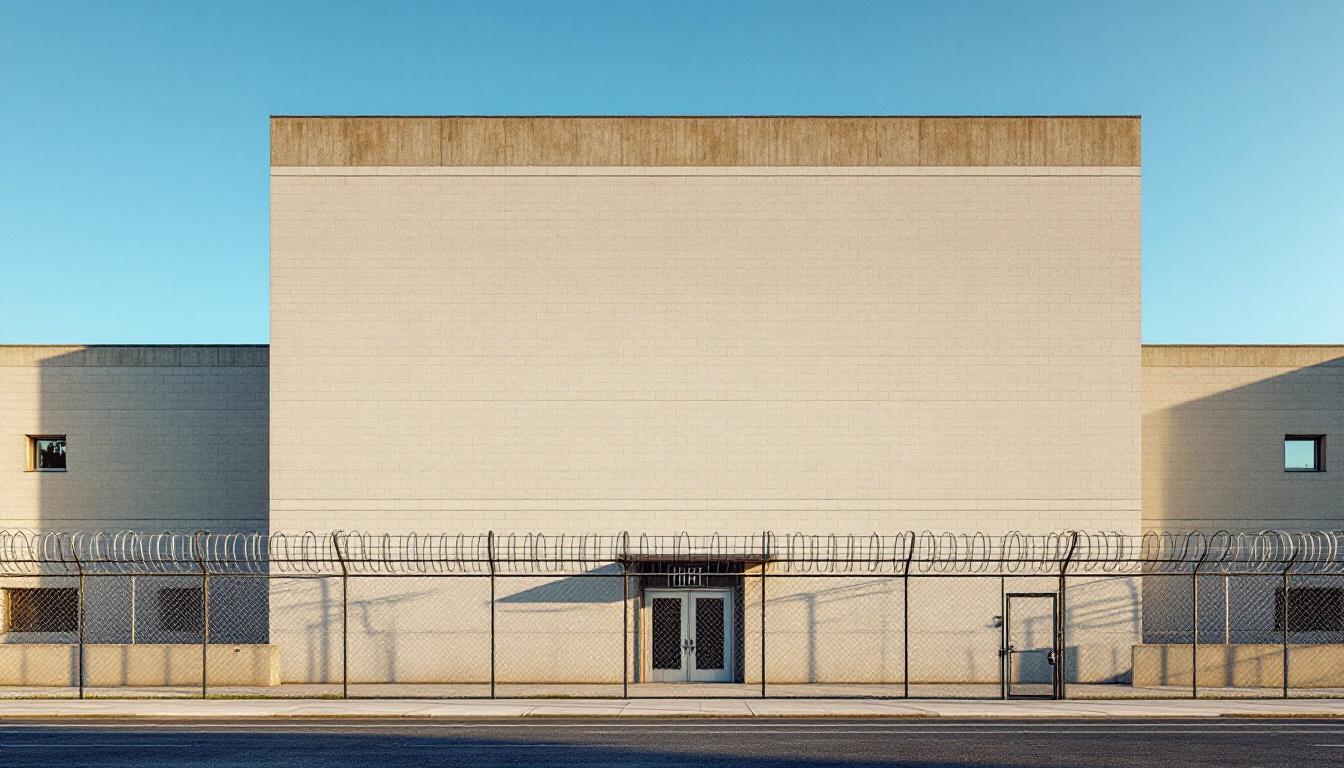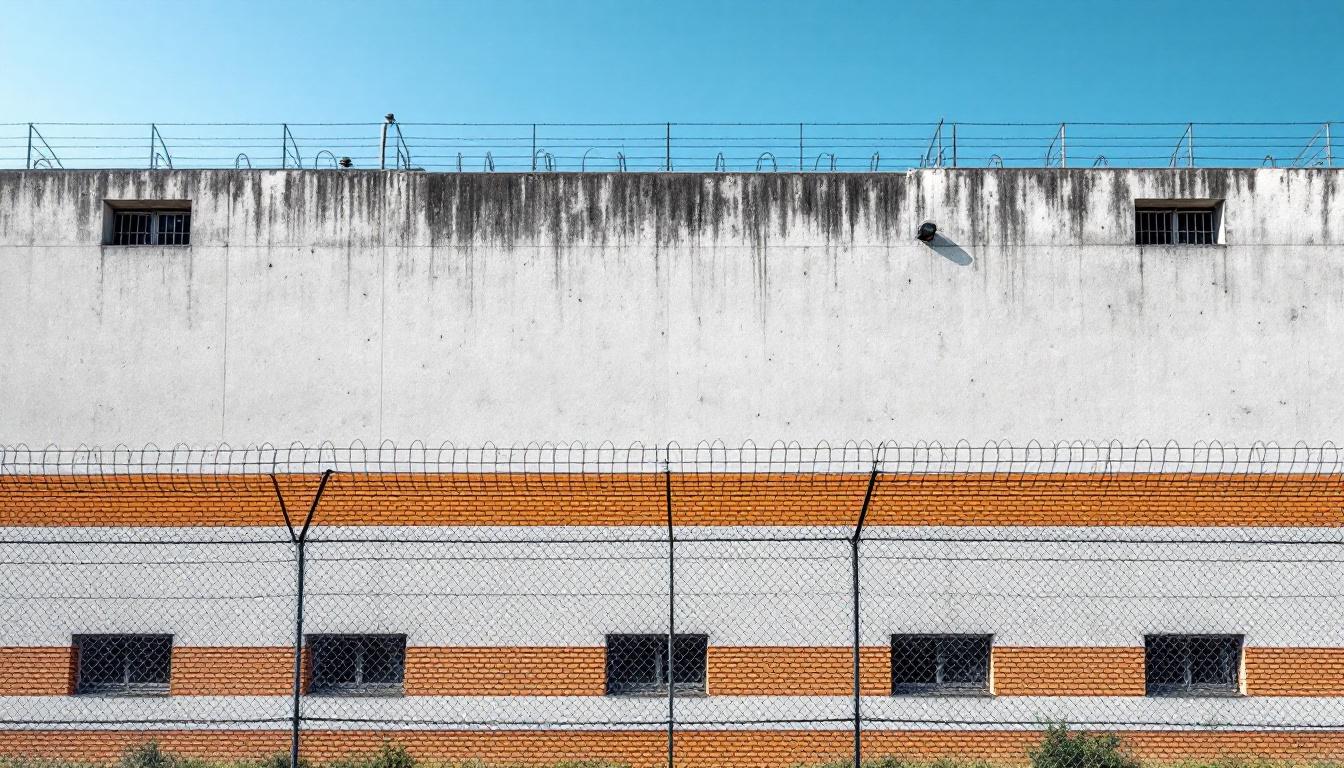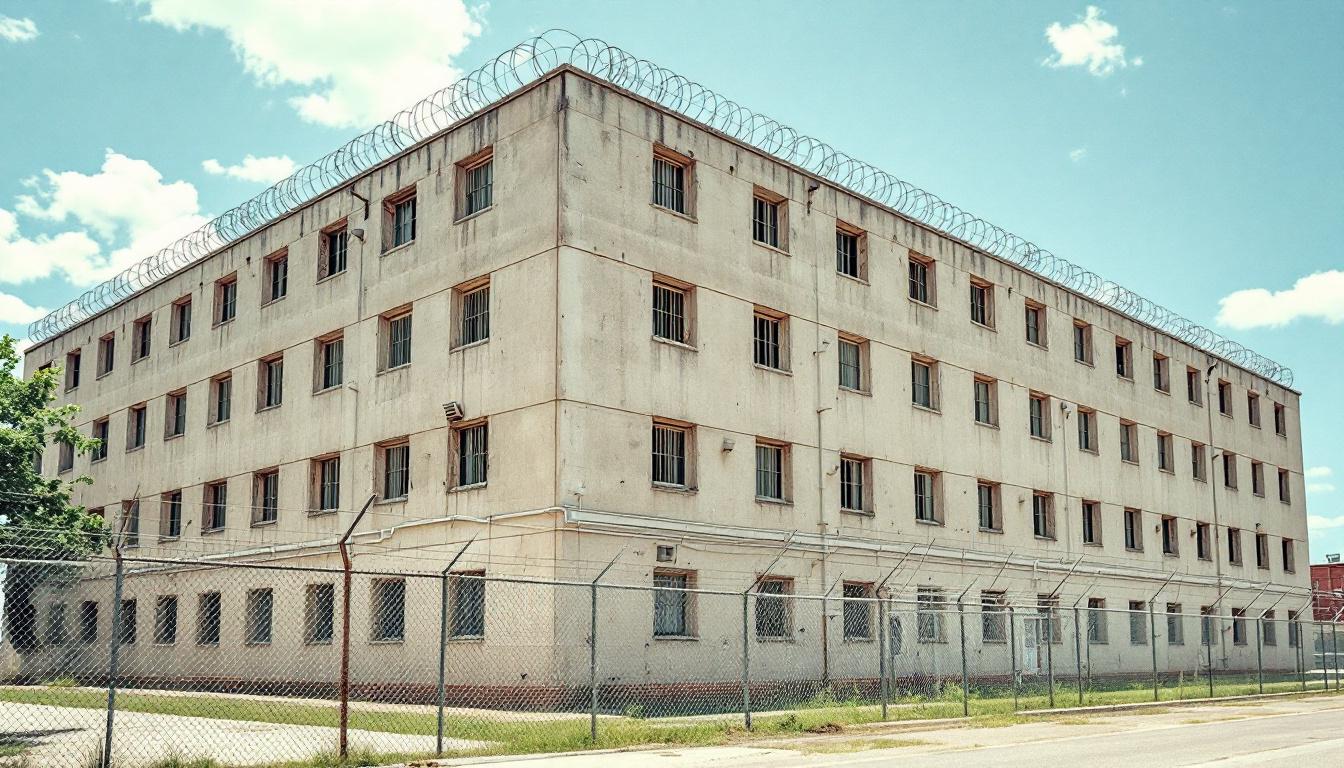
Quick Navigation
How to contact an inmate at Hot Spring County Jail
This comprehensive guide will walk you through how to connect with an inmate at Hot Spring County Jail. Follow the steps below to find an inmate and send letters and photos:
- Search for the inmate using our search tool below
- Create your account or log in to Penmate
- Write your message (up to 6,000 characters)
- Send instantly - inmates receive printed copies daily
Find an Inmate
Search for an inmate to start communicating today
Tip: You can search by first name, last name, or inmate ID number
To contact a person at Hot Spring County Jail start by searching for the person on the official facility website. Perform a search by following these steps:
- Step 1: Enter their first name and last name into the search form and click "Search"
- Step 2: Locate their inmate record
- Step 3: Write down their Inmate ID and any housing information provided
Important! Be sure to enter the person's full name. Nicknames should not be used.
How to Send Messages to Inmates

You can use your phone or computer to send emails, letters, and photos to an inmate. Messages are sent electronically to inmate tablets or kiosks at the facility. If you would like to send a message, start by searching for an inmate at Hot Spring County Jail.
Sending Photos and Postcards

A great way to send love and support to a loved one at Hot Spring County Jail is to send photos and postcards. It only takes a few minutes to send photos from your phone and it makes a huge difference. You can also mail postcards with words of support and inspiration, or design your own postcard for special moments like birthdays and holidays.
Important! Be sure not to send any explicit photos or they may not be approved by the facility. You can also use a photo printing app like Penmate to make sure your photos are printed at the correct size (4x6 or 3x5) and are mailed according to the rules and regulations of Hot Spring County Jail.
Frequently asked questions about Hot Spring County Jail
-
How long does it take to deliver a message?
If you're sending an email message your letter is usually delivered within 24-48 hours. For messages sent via mail you should expect delivery within 3-7 days. All messages will need be approved by Hot Spring County Jail.
-
How much does it cost to send a message to Hot Spring County Jail?
You can send a message free using your phone or mail a message via USPS for the price of a $0.60 stamp and envelope. You can also purchase credits or e-stamps from services starting at $1.99.
-
What services can I use to contact an inmate at Hot Spring County Jail?
Penmate
You can use Penmate to send letters and photos to an inmate from your phone. It's an easy way to stay in touch during your loved one's incarceration. Use the inmate locator to find an inmate's location and contact information, then you can send messages within a few minutes.
Securus messaging
Securus may be another option for communicating with an inmate at Hot Spring County Jail. You can create a friends and family account and purchase credits to send messages. All messages will be reviewed and must be approved by the facility.
JPay
Some county jails and state prisons may support sending messages with JPay. You must register an account with the system, find your loved one, and purchase stamps to send messages. For some locations you can also attach photos.
Smart Jail Mail
You may also check if Smart Jail Mail is available at Hot Spring County Jail. Smart Jail Mail is operated by Smart Communications and has contracted with some state and county jails. After purchasing credits, your messages and photos are sent to the facility, printed out, and then handed out to your loved one.
-
What is the mailing address of Hot Spring County Jail?
Mailing address:
Hot Spring County Jail
1 Detention Ln
Malvern, AR 72104
Phone: (501) 332-7410Business hours:
- Monday: Open 24 hours
- Tuesday: Open 24 hours
- Wednesday: Open 24 hours
- Thursday: Open 24 hours
- Friday: Open 24 hours
- Saturday: Open 24 hours
- Sunday: Open 24 hours
-
What are the visiting hours at Hot Spring County Jail?
Visiting hours at Hot Spring County Jail vary by housing unit and security level. Generally, visits are scheduled on weekends and holidays, with some facilities offering weekday visits. Contact the facility directly at (501) 332-7410 or check their website for the current visiting schedule. Visits typically last 30-60 minutes and must be scheduled in advance.
-
What items are prohibited when sending mail to Hot Spring County Jail?
Prohibited items typically include: cash, personal checks, stamps, stickers, glitter, glue, tape, staples, paperclips, polaroid photos, musical or blank greeting cards, hardcover books, magazines with staples, and any items containing metal or electronics. Only send letters on plain white paper with blue or black ink. Photos must be printed on regular photo paper (no Polaroids). Always check with Hot Spring County Jail for their specific mail policies.
-
How do I send money to an inmate at Hot Spring County Jail?
You can send money to an inmate at Hot Spring County Jail through several methods: 1) Online using JPay, Access Corrections, or the facility's approved vendor, 2) Money orders mailed directly to the facility with the inmate's name and ID number, 3) Kiosks located in the facility lobby, or 4) Over the phone using a credit or debit card. Fees vary by method, typically ranging from $2.95 to $11.95 per transaction.
-
Can I schedule a video visit with an inmate at Hot Spring County Jail?
Many facilities now offer video visitation as an alternative to in-person visits. At Hot Spring County Jail, video visits may be available through services like Penmate, Securus Video Connect, GTL, or ICSolutions. Video visits typically cost $10-20 for 20-30 minutes and must be scheduled in advance. You'll need a computer or smartphone with a camera and reliable internet connection. Contact the facility for their specific video visitation policies and approved vendors.
-
What identification do I need to visit an inmate at Hot Spring County Jail?
All visitors must present valid government-issued photo identification such as a driver's license, state ID, passport, or military ID. Minors must be accompanied by a parent or legal guardian who can provide the minor's birth certificate. Some facilities require visitors to be on the inmate's approved visitation list, which may require a background check. Contact Hot Spring County Jail for specific ID requirements and visitor approval procedures.
-
How can I find out an inmate's release date?
To find an inmate's release date at Hot Spring County Jail, you can: 1) Use the online inmate search tool if available, 2) Call the facility's records department, 3) Contact the inmate's case manager or counselor, or 4) Have the inmate provide this information during a call or visit. For privacy reasons, some facilities only release this information to immediate family members.
Facility Overview
Official Website

About Hot Spring County Jail
Nestled within the heart of Malvern, Arkansas, the Hot Spring County Detention, AR operates as a vital component of the state's correctional infrastructure, serving the local community while maintaining its commitment to both secure custody and meaningful rehabilitation opportunities. This AR correctional facility typically focuses on a collaborative approach that brings together various stakeholders—from law enforcement and judicial partners to community organizations and family members—working toward common goals of public safety and offender reintegration. The detention center generally emphasizes the importance of maintaining strong connections between residents and their support networks, recognizing that successful outcomes often depend on comprehensive coordination between multiple parties invested in positive change.
The facility's residents services approach typically encompasses a range of programming designed to address the diverse needs of individuals within the correctional system. Educational opportunities may include basic literacy development, GED preparation, and vocational training programs that align with regional employment demands throughout Arkansas. Rehabilitation efforts often focus on substance abuse counseling, life skills development, and cognitive behavioral interventions that help residents develop healthier decision-making patterns. Mental health services and medical care generally form essential components of the comprehensive support structure, while family visitation programs and community volunteer initiatives help maintain crucial social connections that support successful reentry into the broader Malvern community and surrounding Hot Spring County area.
Programs & Services
Vocational education and skill-building initiatives form the cornerstone of rehabilitation efforts, reflecting a comprehensive approach that recognizes residents' diverse needs and potential for growth. The facility typically emphasizes practical learning opportunities that prepare individuals for successful reintegration into their communities. This philosophy centers on providing residents with tangible skills and support systems that address both immediate needs and long-term stability, creating pathways for meaningful change during their time in custody.
Educational initiatives often include vocational training programs designed to equip residents with marketable skills for employment upon release. These hands-on learning opportunities may deliver instruction in various trades and technical fields, allowing participants to earn certifications and develop expertise in areas with strong job market demand. The facility typically provides structured learning environments where residents can focus on skill development while building confidence in their abilities. In addition to this, educational components often incorporate basic literacy and numeracy support, ensuring that all participants have the foundational skills necessary to succeed in vocational training programs.
Support services and therapeutic initiatives complement the educational offerings through agriculture programs that teach sustainable farming practices while providing therapeutic benefits through outdoor work and connection with nature. Faith-based services may offer spiritual guidance and community support for residents seeking this type of assistance during their incarceration. Restorative justice initiatives typically focus on helping residents understand the impact of their actions while developing empathy and accountability. Communication skills training often includes conflict resolution techniques and interpersonal development, equipping residents with essential tools for maintaining healthy relationships and navigating challenges in their personal and professional lives.
Daily Life & Visitation

At present, structured schedules actively guide every aspect of residential life, beginning before dawn and continuing through evening hours. Wake-up calls typically occur in the early morning hours, followed by facility counts and preparation for the day ahead. Residents generally participate in scheduled meal times, work assignments, and programming activities that deliver consistent structure throughout their stay. These routines often include designated periods for personal hygiene, unit cleaning, and preparation for various daily activities.
Living accommodations typically consist of shared housing units where residents may be assigned roommates based on classification levels and security considerations. Personal property allowances usually include basic clothing items, limited personal hygiene products, and a small number of approved personal items. In addition to this, residents generally have access to commissary services where they can purchase additional approved items using funds from their accounts. Meal service typically occurs three times daily in designated dining areas, with menus that often rotate to provide variety while meeting nutritional requirements.
Despite this structured environment, residents usually have opportunities for recreation and physical activity during designated periods. Programming schedules may deliver educational classes, vocational training, or counseling services depending on individual needs and facility resources. Family connections typically remain possible through scheduled visitation periods and approved communication methods such as phone calls or correspondence. Work assignments often provide residents with opportunities to contribute to facility operations while developing skills, and these positions may include kitchen duties, maintenance tasks, or clerical work that helps maintain daily operations.
Ready to Connect?
Start communicating with your loved one today
Search for an Inmate
